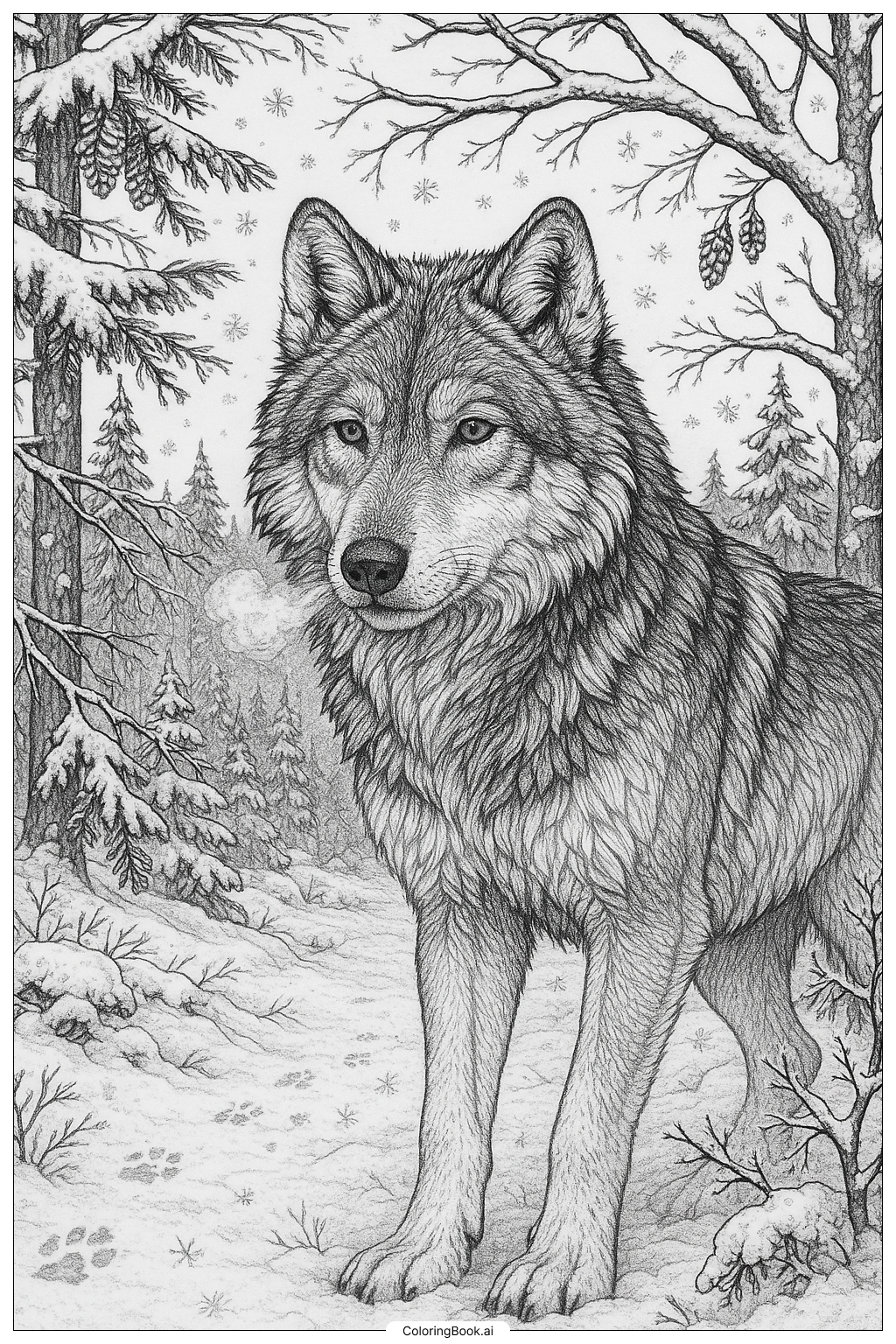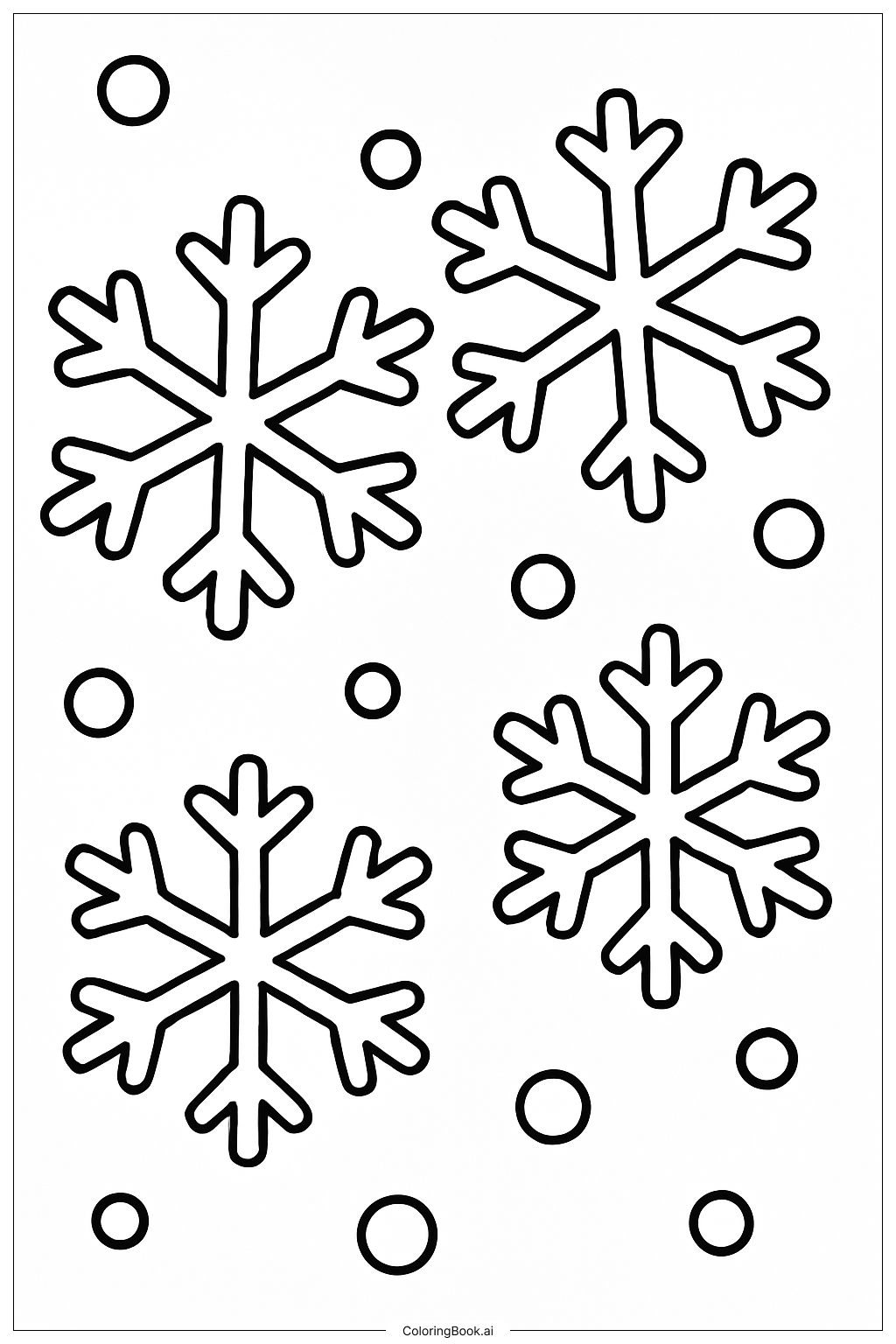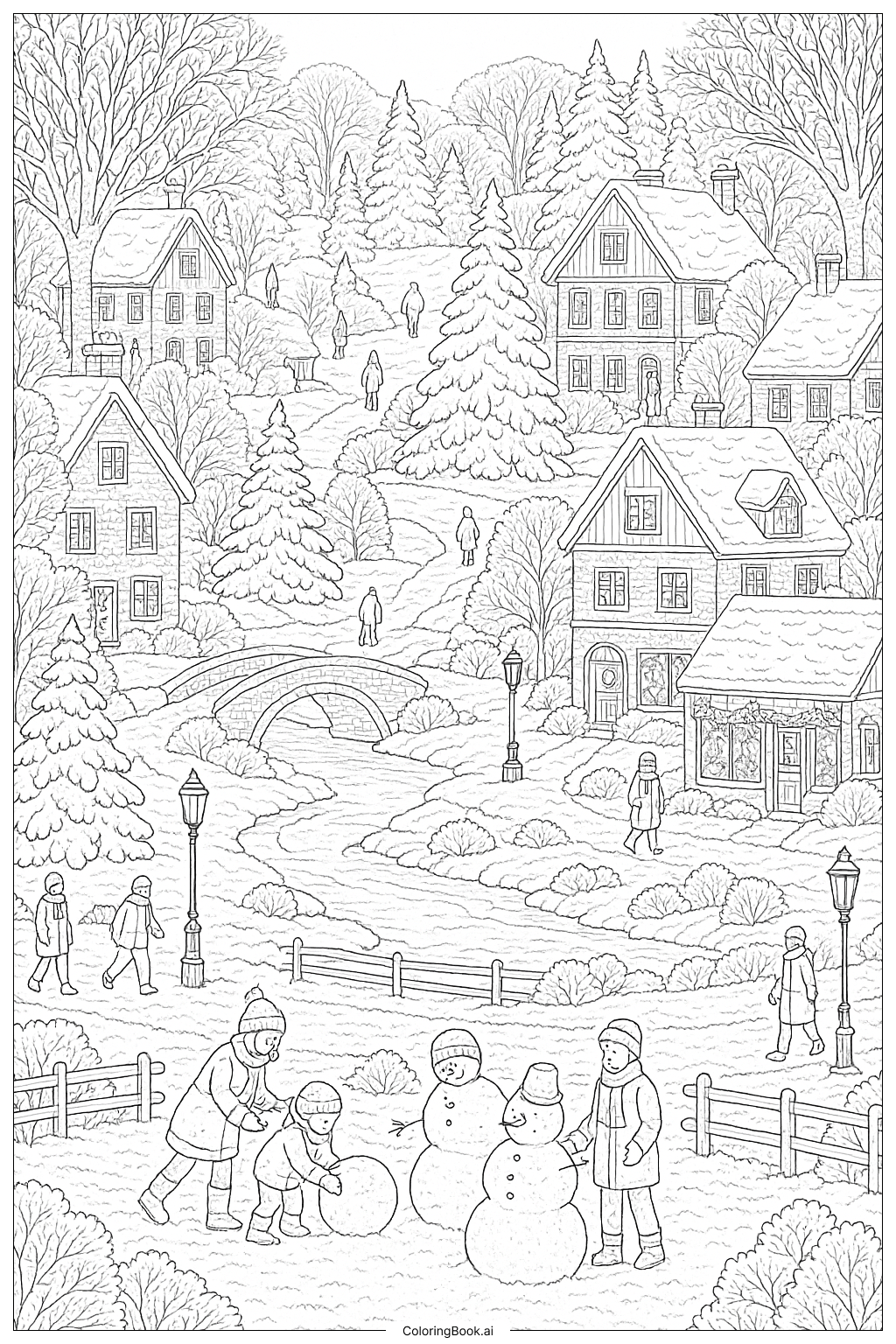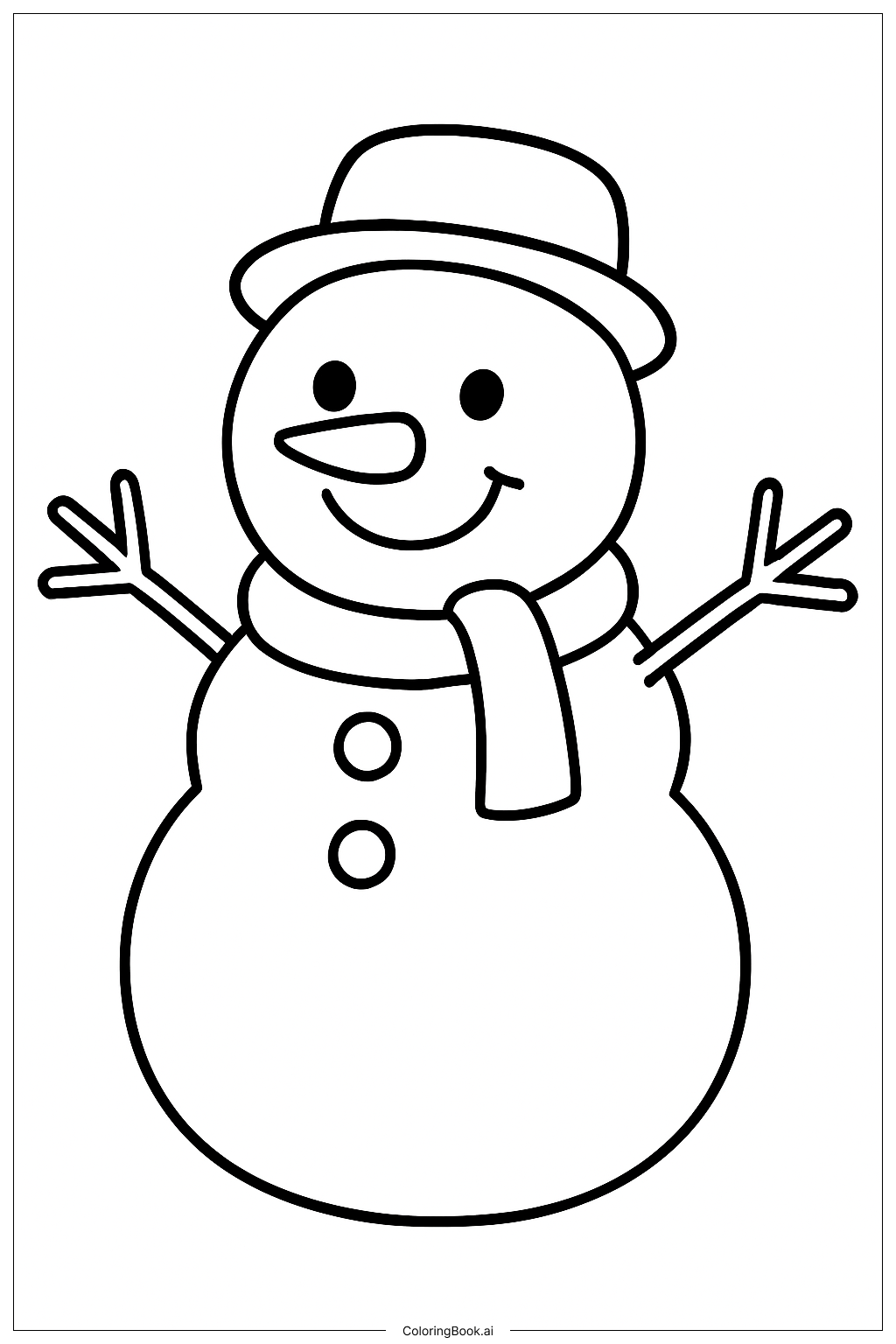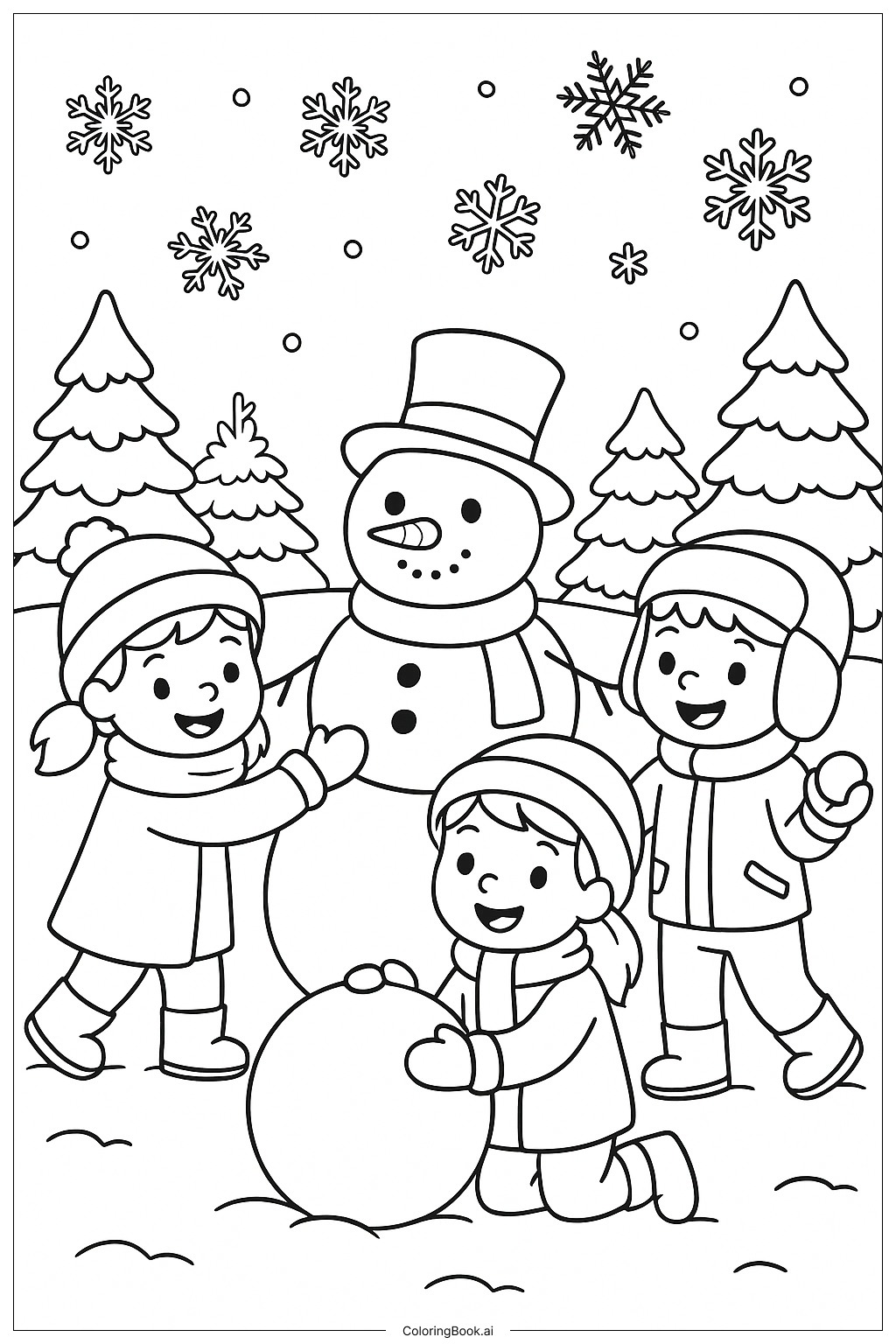Coloring tips: How to color A Realistic Winter Wolf Portrait coloring page well?
Use shades of gray, white, and light blue for the wolf’s fur to bring out its thick and soft texture. Color the snow with light blue and white highlights to show the cold and sparkling effect. For the pine trees, use dark green with some white for the snow on the branches. Add soft gray for the shadow areas to give depth. Use light gray or silver to color the snowflakes gently falling in the background. Try to blend colors softly to create a smooth winter scene. Don’t forget to color the wolf’s eyes to make it look alive and alert.
Coloring challenges: Which parts are difficult to color and need attention for A Realistic Winter Wolf Portrait coloring page?
1. Detailing the wolf’s fur can be tricky since it has many fine lines and textures. Color gently and layer colors to create depth. 2. The snow on the trees and ground has subtle shadows that need careful shading to look realistic. 3. Coloring the small snowflakes in the background can be hard because they are light and delicate. 4. Balancing the light and shadow on the wolf’s body requires attention to avoid flattening the image. 5. The background has many trees and branches with fine details, which need steady coloring and patience.
Benefits of coloring books: Advantages of drawing A Realistic Winter Wolf Portrait coloring page
Coloring this winter wolf scene helps improve focus and attention to detail. It encourages creativity by choosing colors for the wolf and the winter forest. This activity also builds patience and fine motor skills because of the small lines and delicate snowflakes. It teaches about nature and winter while being fun and relaxing. Coloring this picture can give a sense of calm, as it shows a peaceful moment in the wild.
